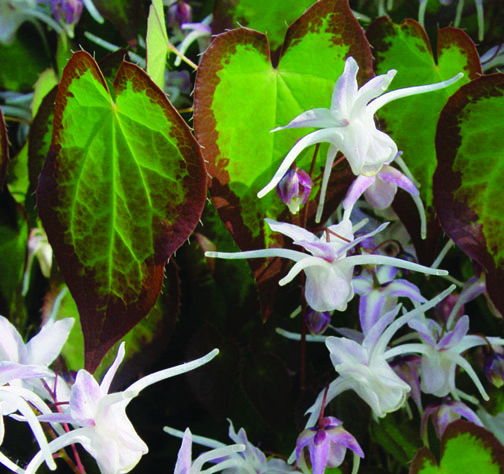Published September 2016
The stress test. That is what Darrell called it whenever he left his plant purchases in pots for years until he found the perfect spot for them in the garden. If a plant survived, then it won his interest. Epimediums were one of the genera that passed this test. This summer has certainly been a stress test for gardens across the U.S. Excessive rain or blistering heat and lengthy droughts have ravaged areas (like here in Massachusetts) that are not accustomed to such extremes.
I’ve been preaching fall planting for years, but it seems to fall on deaf ears for most gardeners. With all of the optimal planting conditions that exist in the fall, I think much of the resistance towards it has to do with the fact that we are just plain tuckered out after a full gardening season. The thrill of spring is gone. But so as not to miss an excellent opportunity to improve your gardens and avoid the stress test, I want to strongly encourage you to consider it. Fellow shade nurseryman, Rick Sawyer of Fernwood Nursery and Gardens in Maine recently posted an excellent article on the many, many reasons you should be planting in the fall. Give it a read, it may change your perspective.
This exceptionally hot, dry summer has given me yet another opportunity to see the effects of not only the drought, but the high temps on the Epimediums that I grow in pots. My smaller pots not only save my customers lots of money on transport, but they keep me out of the chiropractor’s office. However, one drawback to them is that even though I’ve kept up with the watering, they heat up more than larger pots, causing the foliage to go dormant prematurely on some varieties, although their underground stems roots are still going strong. However, this apparent misfortune highlights the best stress-resistent varieties.
This year’s spring-blooming Camel Collection features six such stress-resistent selections with great summer foliage at a discount. In addition to the plants featured in the collection, these are a few other varieties you may want to consider, whose foliage is still spectacular and crisp in late summer:


Epimedium x versicolor ‘Cupreum’ provides a riot of color in all shades of red and salmon in earliest spring. It ends the season with semi-evergreen, almost black-purple, angular foliage.

